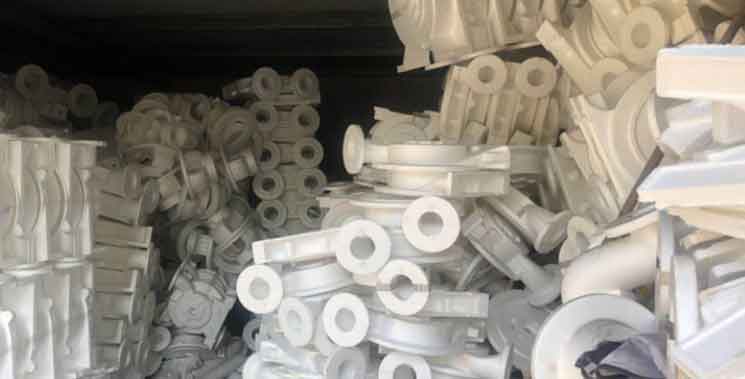
Investment casting has played a significant role in revolutionizing manufacturing for aerospace applications. The aerospace industry demands high-performance components that are lightweight, structurally strong, and capable of withstanding extreme conditions. Investment casting offers several advantages that make it well-suited for aerospace manufacturing. Here’s how investment casting revolutionizes manufacturing for aerospace applications:
- Complex Geometry: Aerospace components often have intricate designs and complex geometries, such as turbine blades, engine components, and structural elements. Investment casting enables the production of these complex shapes with high precision and accuracy. The wax patterns used in investment casting can be designed to incorporate intricate features, internal cooling channels, and precise aerodynamic shapes, meeting the stringent requirements of aerospace applications.
- Weight Reduction: Weight reduction is critical in aerospace to enhance fuel efficiency, increase payload capacity, and improve overall performance. Investment casting allows for the production of lightweight components with thin walls and intricate internal structures. By minimizing material usage through near-net-shape casting, investment casting helps achieve significant weight savings compared to traditional manufacturing methods.
- Material Versatility: Investment casting accommodates a wide range of materials suitable for aerospace applications, including titanium, nickel-based superalloys, aluminum alloys, and stainless steels. These materials offer excellent strength-to-weight ratios, high-temperature resistance, and corrosion resistance, making them ideal for aerospace components that operate in demanding environments.
- High-Quality and Precision: Investment casting produces components with exceptional dimensional accuracy, surface finish, and mechanical properties. The process allows for tight tolerances, ensuring precise fit and alignment of aerospace components. The resulting high-quality castings require minimal post-casting machining, reducing manufacturing time and costs.
- Single-Piece Manufacturing: Investment casting enables the production of complex aerospace components as a single piece, eliminating the need for multiple machining and assembly operations. This reduces the risk of component failure due to joints or weak points, enhances structural integrity, and simplifies the manufacturing process.
- Heat Resistance and Durability: Aerospace components often experience extreme temperature variations and mechanical stresses. Investment casting offers excellent heat resistance and durability, as the materials used can withstand high temperatures and maintain their mechanical properties under challenging conditions. This ensures the long-term reliability and performance of aerospace components.
- Design Optimization and Customization: Investment casting allows for design optimization and customization to meet specific aerospace requirements. The process enables engineers to iterate designs quickly, incorporate design improvements, and optimize component performance. The flexibility of investment casting enables the production of tailored components with specific features, such as airfoil shapes, cooling passages, or reduced part count through complex integrations.
- Reduced Lead Time: Investment casting can significantly reduce lead time compared to traditional manufacturing methods. The ability to produce complex components as a single piece, coupled with the elimination of multiple machining operations, shortens the overall manufacturing cycle. This is crucial in the fast-paced aerospace industry, where reducing time-to-market is essential.
Investment casting has revolutionized manufacturing for aerospace applications by enabling the production of lightweight, high-quality, and complex components. Its ability to achieve precise geometries, optimize designs, reduce weight, and deliver reliable performance has made investment casting an indispensable process in the aerospace industry, contributing to advancements in aircraft performance, efficiency, and safety.
